Lithium batteries are commonplace in the home, from laptop batteries to phones and even electric vehicles and lithium leisure batteries are becoming more popular for use in motorhomes, caravans, and campervans.
In this video, we visit the experts RoadPro to find out more about lithium leisure batteries, how they work and how they can change the way you use your motorhome or caravan.
What is a lithium battery?
Lithium batteries are everywhere these days, in power tools, and in portable appliances, such as vacuum cleaners. And lithium leisure batteries employ a totally new technology and are nothing like traditional lead acid leisure batteries.
Andy Harris from RoadPro says this new technology gives lithium leisure batteries a huge advantage over lead acid leisure batteries.

“If you’re someone who likes taking your caravan or motorhome to a campsite, and you always plug into the mains, then you probably don’t need a lithium battery,” said Andy. “But, if you like to be a little bit adventurous and you like to go off-grid, then a lithium battery could be just the thing to enable you to do exactly that.”
How do I get the best out of a lithium leisure battery?
To get the maximum benefits out of a lithium battery, you will need some extra equipment fitted inside your leisure vehicle.
Howie at RoadPro showed us their technical desk which has all the equipment laid out to have a successful system, including all the correct charging equipment, whilst you’re off grid.

First, there’s a PowerService PSB which is a battery-to-battery charger. The unit takes the incoming voltage from the starter battery and turns it into something that the lithium batteries like.
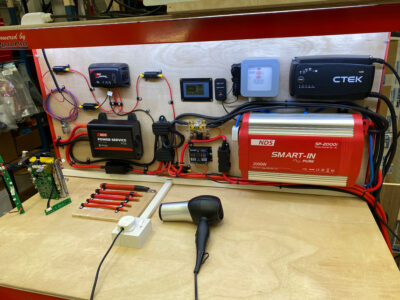
Then there’s a sun control regulator which takes the power from the sun via a solar panel and again turns it into something that the batteries will like.
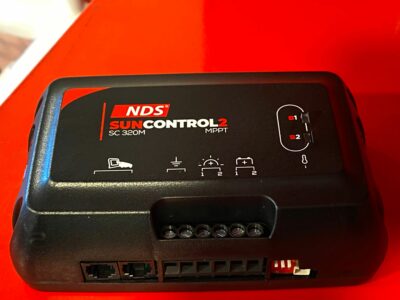
Next is a battery computer and shunt, which measures the returning current, and gives you a really accurate snapshot of exactly what your battery system is doing, and for example, it will tell you that you could use your inverter for so many hours.
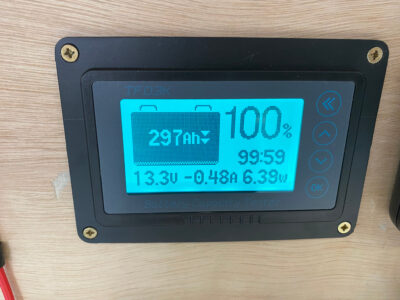
The CTEK battery charger looks after lithium leisure batteries and you can leave it on permanent charge.
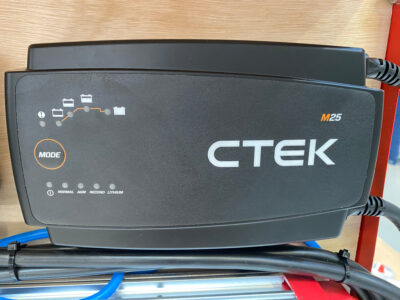
“It’s not going to ruin the lithium leisure batteries because it will actually drop the charge,” said Howie.
The inverter Howie showed us takes the 12Volts from the battery and turns it into 240Volts, so you can power things like a coffee machine, an induction hob, a toaster, or a hairdryer, all off grid as long they are under 2000 watts.
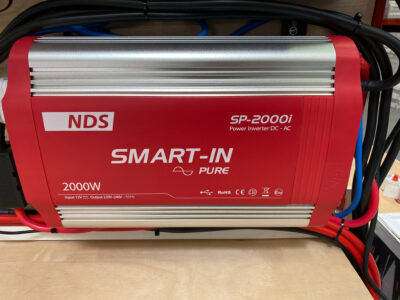
Howie also showed us the battery management system (BMS) from one of their lithium leisure batteries and explained how it’s the brain power that looks after the battery. It will turn the battery off if the temperature gets too high or too low, or fire up the battery heaters if they have them.
“The BMS is what you’re paying for in a lithium leisure battery,” said Howie.
Are there any disadvantages of using a lithium leisure battery?
Lithium leisure batteries aren’t cheap compared to lead acid leisure batteries.
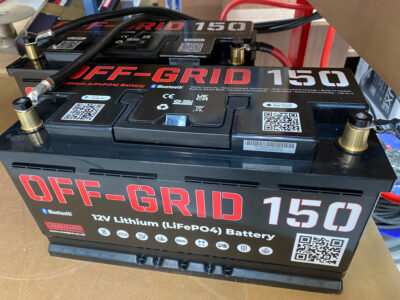
A 100 amp-hours lithium leisure battery could cost £600-£800, or even more, depending on the features that the battery offers.
And if you want to get the most out of a lithium leisure battery, you will need extra equipment, which can be quite expensive, particularly if you get it professionally installed.
“But if lithium battery enables you to use your leisure vehicle in the way that you want to, i.e, not being forced to go to a campsite to get electrical power, then it can be well worth it,” added Andy.
What are the advantages of using lithium leisure batteries?
Whilst the initial outlay for a lithium leisure battery is high in the long run Andy says you will save money.
Battery lifespan
Andy shows us a traditional lead acid battery that says it has up to 200 cycles on it – that’s how many times the battery can be fully discharged and then charged again.
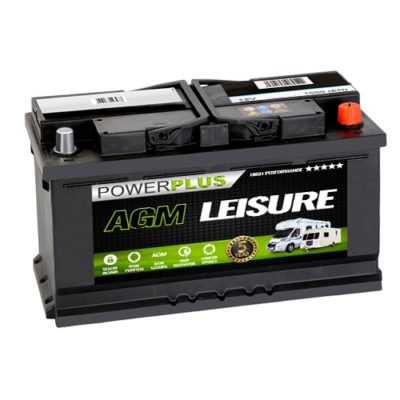
“That’s the life of the battery,” said Andy. “With a good lithium leisure battery, you’ll get 4,000, even 5,000 or more cycles. That’s a 200 times longer lifetime with a lithium battery. So if you buy a good lithium leisure battery, you may never need to buy another leisure battery, ever.
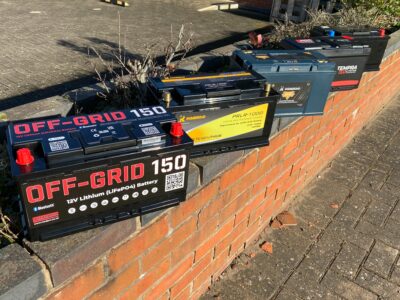
“What’s more, if you want mains electrical power, you can have an inverter in your leisure vehicle and use all the appliances that you’d use when you’re on hookup, even when you’re in the middle of a field, in the middle of nowhere.”
Lighter weight
Lithium leisure batteries are up to 50 percent lighter than the equivalent capacity lead acid batteries.
Maintenance-free
Andy says as long as a lithium leisure battery is installed correctly, you never have to do anything with them.
“They’re completely safe. There’s no risk of gas or acid escaping,” he added. “They can be very quickly charged and lithium batteries don’t mind being discharged very quickly.”
Another huge advantage of lithium leisure batteries is that during the winter period if your caravan motorhome is in storage, you don’t have to worry about a lithium battery discharging.
Andy says they self-discharge at about three percent on average. Unlike a lead acid battery, which could discharge completely if left for a couple of months, a lithium battery will still have some charge in it.
How do you look after a lithium leisure battery?
“They really are maintenance-free,” explained Andy. “You don’t have to check for cracks, splits or sulphated terminals, because it just doesn’t happen.”
The only thing that you really need to be aware of is that in the winter months if the temperature is consistently below zero for days on end, then you should always check the batteries are working properly and that they’re in a good state of charge, particularly if they’re powering an alarm and/or a tracking device.
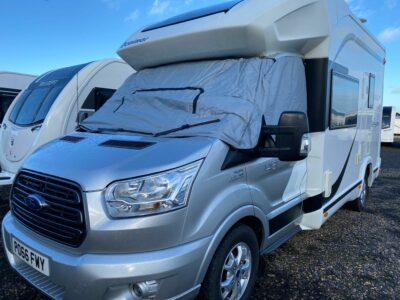
Leisure batteries do need care regardless of their type, so don’t forget to regularly check the voltage and if needed, use a smart charger to keep your leisure battery in tip-top condition, particularly in the winter months.
Over to you…
Got any advice on lithium leisure batteries you’d like to pass on to other motorhomers or caravanners? Do you use a lithium leisure battery, and if so, how do you find it? Feel free to leave a comment in the box below


Lead Acid batteries can only be discharged to about 50% before they start to suffer permanent damage, lithium can drop virtually to empty without damage. Charge times for LA batteries are also much longer than for lithium. Equivalent outputs would weigh twice as much with LA batteries.
Having said all that, I’m still using 2 x 100ah lead Acid batteries with two 120 watt solar panels and a 2kw inverter and seldom run into any problems but if it’s not a bright day after 6 brews using a 1200w kettle for 2 mugs of tea I have to revert to using the gas hob!
A correctly-sized charging system involving solar panels, charge controller, lead-acid batteries, and an inverter would provide almost identical performance to what has been described here in this article, at a fraction of the cost of using lithium as the choice of battery.
The article, in my opinion, is simply an advertisement for lithium batteries, and should have been clearly stated as such in your publication.